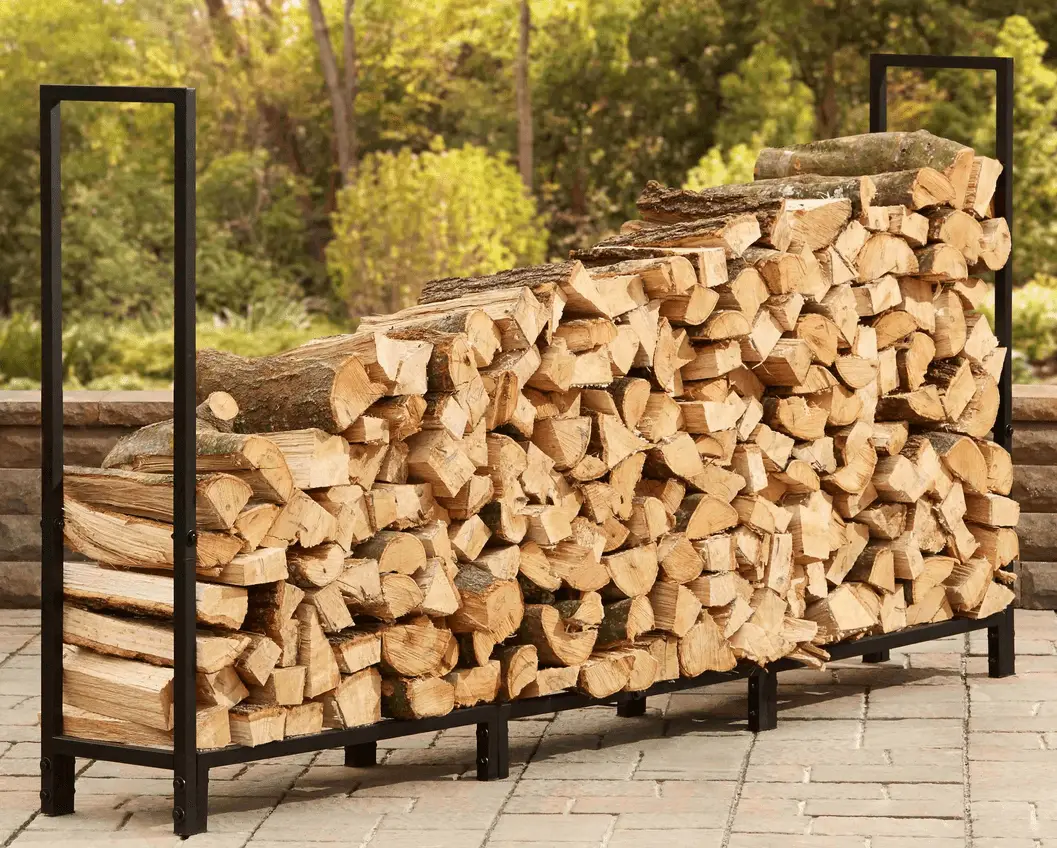A cord of wood is a stack of firewood that measures four feet high, four feet wide, and eight feet long. This type of firewood has many benefits that make it an ideal choice for those looking to heat their home or enjoy a cozy fireplace.

One of the primary benefits of purchasing a cord of wood is its cost-effectiveness. For example, when purchased from a local dealer in bulk, you can expect to pay as low as $200-$300 for a cord (read our article about How Much Does a Cord of Wood Cost). This makes it far cheaper than other sources, such as propane, natural gas, and electricity. In addition to being cost-effective, it’s also an environmentally friendly fuel source because it doesn’t produce carbon dioxide emissions like other sources.
When properly stored, wood from a single cord can even last for years, making it an excellent investment. To ensure maximum longevity, store your firewood away from direct sunlight in an area with good air circulation so that it can fully dry out without becoming moldy or wet due to exposure to moisture. You can also purchase specially designed log holders, perfect for keeping your firewood neat, organized, and off the ground where pests could get into them.
How Long Does a Cord of Wood Last?
On average, a cord of wood is expected to last between 6 – 10 weeks when the wood is used primarily to generate heat for a house during the winter. Although, the exact period a cord of wood may last depends on several factors, including the wood type, the size of the home, etc. However, it will be essential to consider each element.
The answer to this question largely depends on various factors, such as the type of wood and the size of the home. Generally speaking, a cord of wood is expected to last anywhere between 6-10 weeks when used for heating a household during winter months. However, other aspects should be considered when considering how long a cord of wood will last, depending on individual circumstances.
- Wood Type and Quality Oak, maple, birch, and cherry are popular for firewood because they tend to burn longer than softwood varieties like pine or cedar. Additionally, many people look for seasoned or kiln-dried wood, which has been cured after being cut and split; seasoned or kiln-dried firewood often produces more heat per cord than freshly cut logs, thus lasting slightly longer. Finally, the size of the firewood logs being burned can also affect how much heat is produced per cord: larger pieces tend to burn hotter for more extended periods than smaller ones.
- Size Of Home The size of the home is a significant factor in determining how long one cord of firewood will last. Larger homes with multiple floors, large windows, and areas that require additional heating require more energy consumption. On the other hand, smaller homes with fewer rooms and less insulation need far less energy consumption over time; as such, they will see an increase in efficiency when burning fires made from one cord of wood during winter months.
- Climate Conditions The climate conditions in an area can also play a role in considering how long one cord of firewood may last before needing to be replaced or replenished. Cold climates will require more heat energy output from fires made from one cord, while milder temperatures may get away with burning fires caused by just half a cord at once. It is essential to pay attention to local weather forecasts so that you know what temperature range your home needs to be kept at for optimal comfort levels during cold temperatures; this way, you can adjust accordingly by adding more fuel if needed or conserving fuel by using smaller amounts at once depending on the situation at hand.
- Methods Of Burning Firewood Finally, it’s essential to consider how your firewood is being burned each night; different ways produce different levels of efficiency when making heat from one cord of wood. For example, building large bonfires has more heat than smaller fires; however, this method requires burning through more logs each night, ensuring the cords are replenished more frequently throughout winter months for optimal performance levels to remain consistent. Additionally, correctly stacking your log piles will also help provide air circulation around all sides so that combustion is complete – this helps create more giant flames, which generate higher levels of energy output overall compared with small piles, which don’t allow enough air space between each log piece leading them to smoke rather than burn completely thus wasting energy output potential over time.
In conclusion, while it’s challenging to place an exact timeline on how long one cord of firewood may last in any given situation due to varying factors like those mentioned above – understanding these details and considering them can help you make informed decisions about how much fuel needs replacing over time, so you’re never left without sufficient warmth generating potential during cold winter months ahead!




